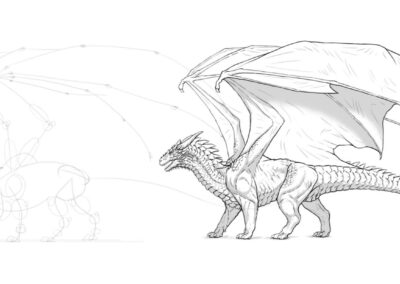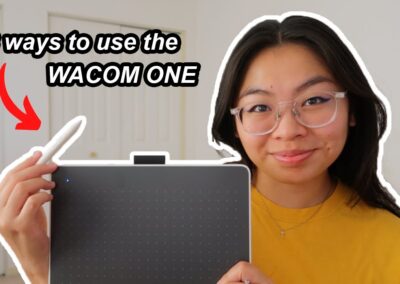I believe that artists learn best when we apprentice under a master artist practicing a particular “school of thought” style of art. That is how it was done historically. An oil painter’s apprentice pressed the linseeds to make linseed oil, procured and mixed pigments for paint, and stretched canvas. A sculptor’s apprentice fetched clay, blocked in rough primary shapes, and assisted with labor intensive tasks like firing, molding, and casting. Apprentices also maintained the art studio, keeping work areas clean and processing art material orders so that the master artist could focus on creating great works of art. In exchange, the apprentice gained valuable first-hand knowledge and experience, learning techniques and strategies that would give him an advantage to create works reflecting the unique style of art that the older artist had mastered. Because the apprentice focused his learning on one style of art, it was easier for him to work toward mastering that style. The master artist also benefited from this set up. She groomed a successor to carry on her legacy. This ensured that her style of artistic expression would remain relevant as new schools of thought emerged.
There were many schools of thought during this era of apprenticeships. Late 16th-century Italian Baroque painter Michelangelo Caravaggio, for example, inspired the Caravaggisti school of paintings. Caravaggisti, those who followed the Caravaggio style, employed many of Caravaggio’s techniques of using a limited color palette along with dramatic light and shadow. You can see Caravaggio’s influence even a generation later in Rembrandt’s work.
Are there apprenticeships in the digital art world? Unfortunately, no. Around 2012, I wanted to become a digital artist after training in traditional art for 7 years. I searched for a digital art school of thought to emulate and a master digital artist to learn from. My search for a formal program that I could enroll in came up short. I think there are a couple of reasons why. Schools of thought are created and sustained by people who are committed to furthering a unique style regardless of current trends. This kind of commitment is lacking in the digital art industry. The industry has instead invested in a few profitable art styles. When I started in digital art, the favored art styles were Pixar-like art, hard surface art for shooter games, and mobile gaming art. I also think senior artists aren’t interested in grooming successors. Maybe they don’t want to perpetuate the current art styles and don’t have a strong art perspective of their own? Maybe they want to hold back knowledge to limit job competition? Maybe they think it’s too time consuming?
Even without a formal apprenticeship model, I’ve seen plenty of amazing digital artists on ArtStation or ZBrushCentral over the years, and their works keep improving. But when I’ve dug deeper, I’ve learned that some of the best digital artists have either apprenticed under an expert or focused their learning in a particular school of thought. Gio Nakpil, known for his work on The Incredible Hulk, is a digital sculptor who studied under Carlos Huante, whose creature designs have been featured in sci-fi blockbusters like Blade, Men in Black, Planet of the Apes, and Prometheus. Huante, a 30+ year traditional sculptor and draftsman, employs volumetric sculpting and drawing techniques which are echoed in Nakpil’s digital sculpts. Peter Konig, whose sculpts have been featured in movies from Coneheads to Enchanted and who learned under Tippett Studios founder Phil Tippett, sculpted and animated traditionally for decades before adopting digital tools. Konig’s mastery of traditional mediums is apparent in his digital art. Rafael Grasetti and Amilcar Aldana Fong are two more artists whose works show their mastery of both traditional and digital art. I do not know who Grasetti and Fong studied under, but the schools of thought that have shaped their art styles shine through their works.
Once I saw the connection between expertise and training within a school of thought, I couldn’t unsee it. I wanted this for myself. But there wasn’t a formal apprenticeship path, like through an art job, available to me when I was starting out. And I didn’t know a good artist with a unique style who was willing to invest time in teaching me to be their successor, even for pay. So instead I spent years piecemealing together my own school of thought using techniques from my favorite traditional art instructors, online digital art classes, movie production artists, and classical artists.
What resulted is a style that’s predominantly influenced by my favorite artists, one historical and one a living legend.
Famous Orientalist period painter Jean-Leon Gerome is the historical master artist who’s influenced my work the most. Gerome was so skilled that even his student, Charles Bargue, grew to become one of the best artists of all time. Bargue was a skilled draftsman known for teaching students to draw first from plaster casts, then advanced them to drawing master copies, and then graduated them to drawing from living models. Gerome’s and Bargues academic approach to capturing highly detailed opulence matches my approach to art. I always start my fanciful designs from an academic foundation.
Student work from Charles Bargue course on drawing from a cast.
I practice Gerome’s and Bargue’s drawing techniques using Caran d’Ache water soluble graphite on Tomoe River sketchbook paper.
The second artist who’s influenced me most is legendary Steve Wang, a Los Angeles-based creature designer, traditional sculptor, makeup artist, and filmmaker. Wang is best known for his sculptures in Guyver, Guyver Dark Hero, Predator, Underworld, Blizzard, and Hellboy. Wang’s understanding of animal, human, and fantasy anatomy is unmatched and his treatment of creature surfaces is so academic that it would please even the late Jean-Leon Gerome. I can see Wang’s years of study and observation in his work. I strive for my art to achieve the level of quality that Wang brings to his works.
I apply Gerome’s academic approach and combine it with my love of Wang’s fantasy-based anatomy designs to create complex characters like this one.
I felt much freer once I developed my own artistic lens from which to learn digital art. I was no longer stylistically lost. I could learn much more quickly as an (unknown, distant) apprentice to Gerome and Wang, gleaning as much knowledge as I could from observing their masterful works.
Having been lost myself, I recommend that less experienced artists identify one or more master artists that they can apprentice under or whose works they can study intimately from afar. It’s much easier to improve when you have a direction in mind; having artistic and stylistic role models helps you to do that. Although I’m not yet at the level of a Steve Wang, I also hope that any master artists reading this will consider taking a promising, young artist under their wings. This will help ensure that your expertise and style, developed over your lifetime, continues long after you’ve passed. There is no telling how many digital Rembrandts that one master artist can create.
Quincy Vadan is an artist living in Los Angeles. Quincy began his art career studying fine art and illustration for 6.5 years at the Academy of Art University in San Francisco. He was then awarded a merit scholarship to attend Parsons School of Design in New York City. Quincy declined to pursue self-study of 3D art and cultivate his aesthetic palette. He spent the next 5 years incubating: training in the latest digital art techniques, advancing traditional art skills, combining the two, and applying them to designs that are in his signature style. From fashion fits to digital characters to jewelry, his designs, which are often described as “beautifully original,” “a compelling blend of masculine/feminine, practical/fantastical, simple/ornate,” and “of the future and yet eternal,” are the result of a decade of journeying to uncover mastery, beauty, and meaning.
Follow Quincy:












